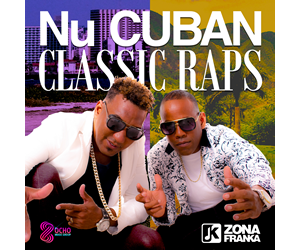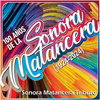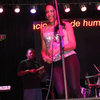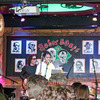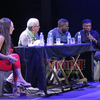Indice - Table of contents
Lo Nuevo [hide]
Tienda : Test Page 20250825
Reportes : From The St... : Page 1a
Reportes : From The St... : Page 1
Resenas : Test Review MPL
Resenas : Test revew
Musicos : New Musician
Fotos : Tom Ehrlich : test subpage
Fotos : Tom Ehrlich : test 3
Fotos : Michael Lazarus : MPL - New Gallery 1
Tienda : Methods · Métodos
Musicos : Juan Formell
Musicos : Yordamis Megret Planes
Musicos : Yasser Morejón Pino
Fotos Del Día [hide]
The Roots of Timba, Pt I - 1948-Tumba palo cucuyé
1948 Arsenio Rodríguez - Tumba palo cucuyé
0xx0 xx0x xx0x 0xxx 3-2 son clave
0xx0 xx00 xxx0 000x MIDI example
bassist: Lázaro Prieto
source: Legendary Sessions
notes: The opening coro and piano solo are played over a bass tumbao which strongly marks the clave. It reinforces the coro and then answers it with a quick 4-note figure. The section that comes after the piano solo is unusual for two reasons. First, almost all of the solos on Arsenio's recordings are followed by a bloque, but in this case a second coro comes in before the bloque. The other oddity is that the second coro comes in on the pickups to the 2-side and implies 2-3 clave, (if you're inclined to hear it that way), but the second coro is only repeated two and a half times before the piano takes over again briefly and builds up to the bloque. Here's the whole section, with a MIDI example which isolates the transcribed parts:
C=Coro, P=Piano, B=Bloque
0xx0 xx0x xx0x 0xxx 3-2 son clave
xxxx xCCC CxxC CCCC coro 2: qué cucuyé, hachero tumba
CCCx xCCC CxxC CCCC palo a ver - qué cucuyé, hachero tumba
CCCx xCCC Cxxx xxxx palo a ver - qué cucuyé
xxxx xxxx xPPP Pxxx signature piano lead-in figure
BBBx xBBB xxxx Bxxx bloque
xxBx xxxx BxBx BBxx bloque continued audio example - MIDI example
Arsenio influenced timba in many very tangible ways -- the addition of the congas, piano and horn section; the concepts of the mambo, melodic and clave-aligned basslines, and bloques; the incorporation of rumba and Afrocuban influences; the use of Havana's barrios and street language as the subjects of lyrics, and so on. But the passage above illustrates an equally important but much more intangible commonality between Arsenio's music and timba. There's the playful approach to the clave and the predilection for twisting it around in wonderful and unpredictable ways, but the hardest quality to pin down is the attitude. Listen to the audio example again. After the bloque goes out of its way to disrupt the groove, the last four notes of the horns pound out the clave triumphantly, and then, before the coristas can finish their phrase, the horns roar back in with a funky growl. Compare that lusty growl to the one at end of this 1994 passage from Charanga Habanera (source). Arsenio's DNA is all over this crime scene!



